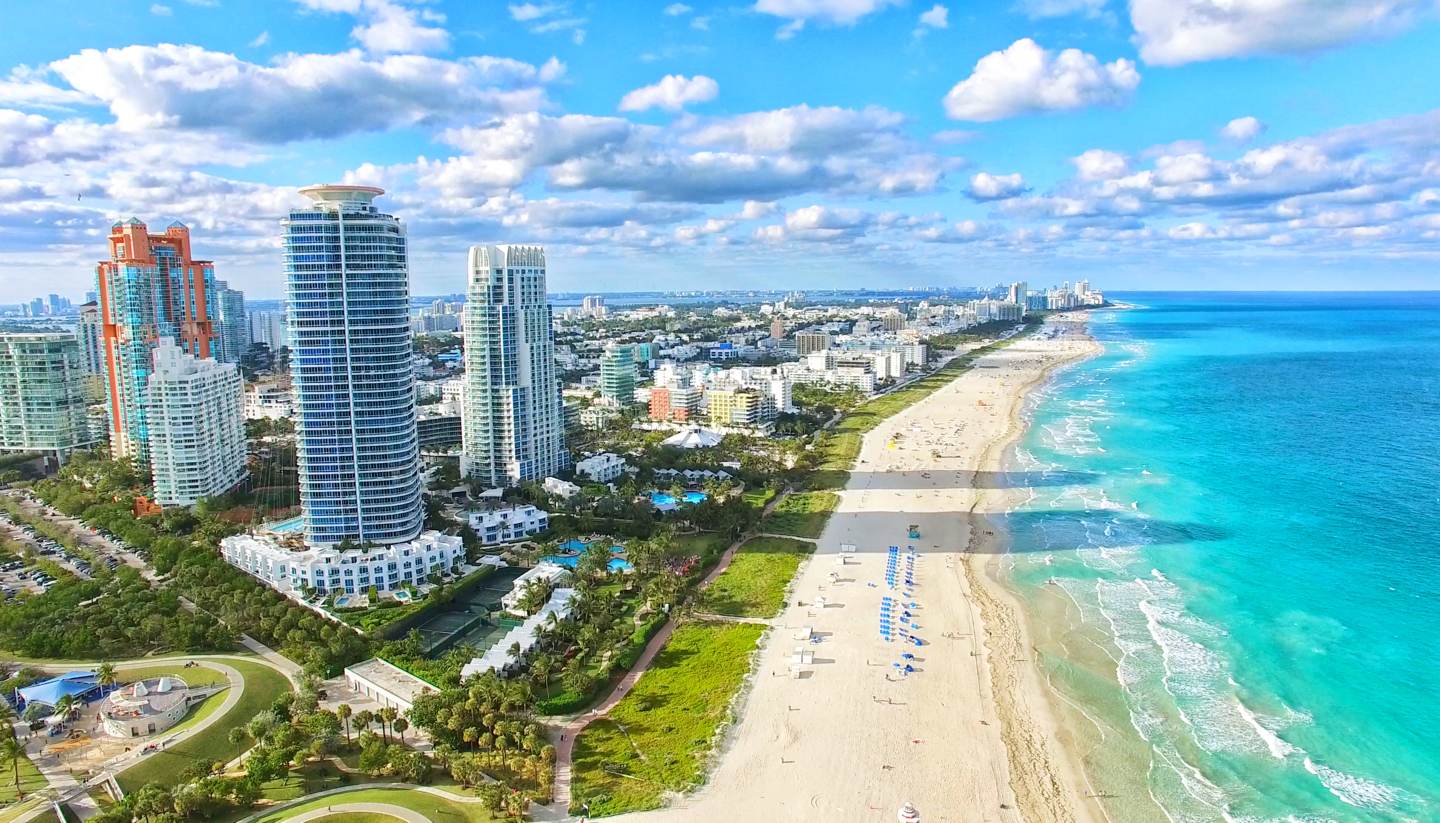Florida Weather, climate and geography
Weather and climate
Best time to visit
On average, Florida tends to maintain warm temperatures throughout the entire year with slightly lower temperatures during the winter months. Summers are long, warm and particularly humid, lasting from May to October. And the winters throughout the state are quite short and dry, lasting from December to February. In January, the coldest month, the average temperature is 61°F (16°C). In July, the hottest month, the average temperature is 82°F (28°C).
The climate in Florida is heavily influenced by the fact that the state is a peninsula, surrounded completely by the sea. Since the sea is able to store heat, the coastal areas tend to maintain s slightly warmer temperature in the winter than the central areas of the state. This also explains why the average temperature of the surrounding sea in Florida is the highest in the month of July (84°F or 29°C), making it one of the best times of the year for swimming.
Florida, in particular, also tends to experience a wet and a dry season throughout the year. During the wet season, lasting from May to October, the state tends to experience high levels of humidity followed by heavy, yet brief, thunderstorms on almost a daily basis. In fact, Florida reports more thunderstorms on average than any other US state. The north-western coastal areas are especially prone to instances of heavy rainfall, more than any other area in the state. Thus, those interested in staying in the drier areas should keep to the interior or try the southwestern coastal areas. The wet season also increases the chance of tropical storms and hurricanes, particularly from August to October. During the dry season, in contrast, the state tends to experience low levels of humidity and clear skies, lasting from November to April. However, since the chances of rainfall are significantly less during this period, displays of wildfire do occur, but not on a frequent basis.
Required clothing
During the summer months, sunglasses, hats, lightweight cottons and linens are recommended, though air conditioning in many public places can push indoor temperatures down. It does tend to get a bit cooler during the evenings and nights, so light jackets are also recommended. During the winter months, heavier coats may occasionally come in handy in the northern areas, whereas, light coats may be useful in the central and southern parts of the state.
Geography
The state of Florida occupies, for the most part, a relatively flat peninsula between the Atlantic Ocean, the Gulf of Mexico and the Florida Straits. At its most distant points, it extends approximately 805 km (500 miles). The states of Alabama and Georgia border Florida to the north, with a portion of Alabama bordering the state at the western tip of the Panhandle. Bimini, one of the islands of the Bahamas, lies a mere 92 km (57 miles) from the city of Miami and Havana, the capital of Cuba, is around 171 km (106 miles) south of Key West.
With a total area of 170,304 sq km (65,755 sq miles), Florida ranks 22nd among the 50 states in size. The state boasts 13,576 km (8,436 miles) of coastline, 1,067 km (663 miles) of which are beaches. The St. Johns River is the longest river in the state, running northward for 499 km (310 miles) from the St. Johns Marsh in Indian River County to its outlet with the Atlantic Ocean at Jacksonville. Lake Okeechobee is Florida’s largest freshwater lake measured at 1,891 sq km (730 sq miles), making it the second largest freshwater lake within the contiguous United States. Florida’s highest point, Britton Hill, is situated at 105 m (345 ft) above sea level in the Panhandle, making it the lowest highpoint of any US state.
Florida, like most other states, is divided into smaller administrative units called counties. In total, there are 67 counties in the state. Miami-Dade County is the most populated county, according to 2018 census figures, with 2,761,581 residents. Liberty County, in contrast, is the least populated county in the entire state with only 8,457 residents. The largest county, in terms of area, is Palm Beach County (5,268 sq km or 2,034 sq miles) while the smallest is Union County (622 sq km or 240 sq miles). The largest cities in Florida, in terms of population, are Jacksonville, Miami and Tampa, according to 2018 census figures. The largest metropolitan areas by population include Miami-Fort Lauderdale-West Palm Beach, Tampa-St. Petersburg-Clearwater and Orlando-Kissimmee-Sanford.



